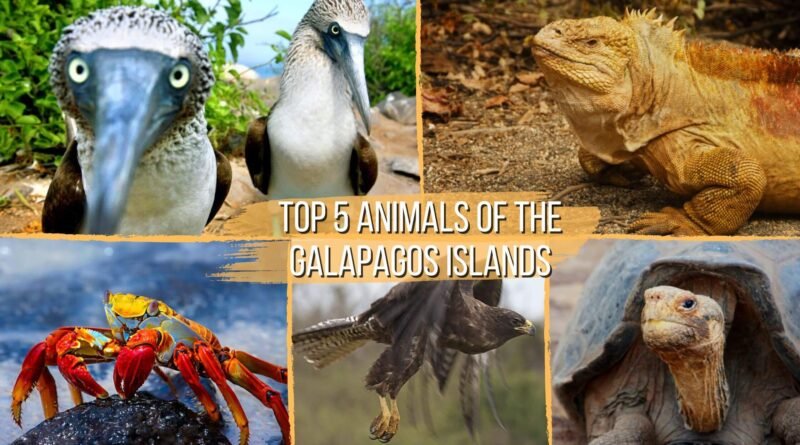Top 5 animals of the Galapagos Islands: meet the Galapagos tortoise
The Galapagos Islands could be described as a lost world in some science fiction work. With its animal species that have never been seen anywhere else in the world, like the galapagos tortoise, its often inhospitable nature, but with spectacular beauty. Let’s get to know a little more about this almost-lost paradise. Keep reading and have fun knowing the Top 5 animals in the Galapagos Islands!
The archipelago
The Galapagos archipelago is a group of more than 50 islands of volcanic origin, located in the Pacific Ocean. It is about a thousand kilometers from the Ecuador coast. Of these more than 50 islands, there are 4 main ones: Santa Cruz, San Cristóbal, Isabela, and Floreana. It is on these islands that about 28 thousand human inhabitants of the archipelago are scattered.
In 1978 the Galapagos Islands archipelago was designated a World Heritage Site by UNESCO. Since 1984 it has been listed as a Biosphere Reserve (a worldwide network coordinated by UNESCO). Its official name is Archipiélago de Colón.
The Galapagos Islands became world famous because of Charles Darwin’s research. In November 1859, he published the acclaimed scientific work “On the Origin of Species”. A theory greatly influenced by what he studied on the islands.
Top 5 animals of the Galapagos Islands
Now let’s get to know a list of 5 animals. Some are endemic and exist only in this territory. Let’s go?
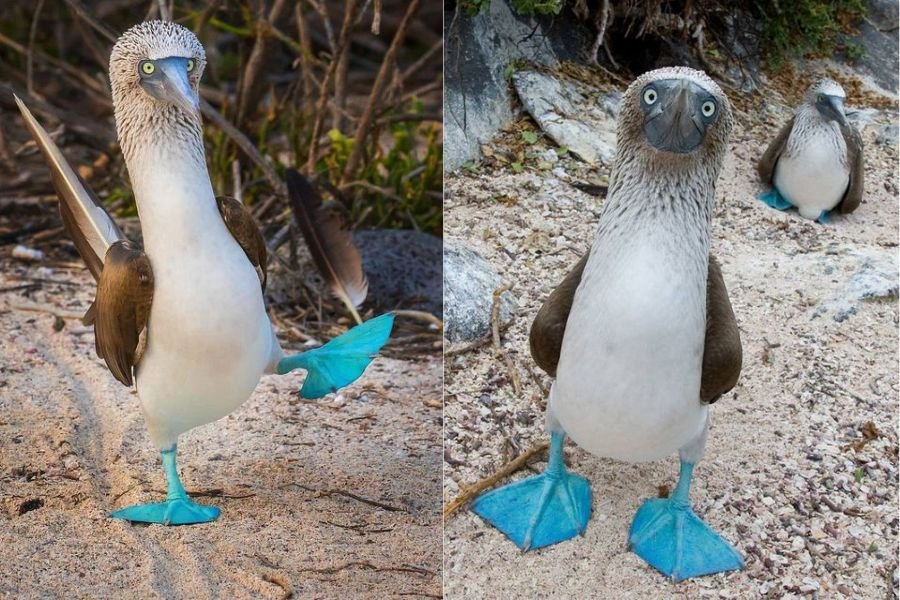
Blue-footed Booby (Sula nebouxii)
The blue-footed booby is a seabird of the Sulidae family. It measures about 35 inches long, with females being slightly larger than males. Their wingspan can reach five feet. They inhabit the Islands, the Gulf of California, the western coasts of Central America, South America, and Peru.
The most prominent physical characteristic of this species is specifically its blue feet. This gives rise to its name. The males use it to attract females during the mating season: the bluer the feet, the more attractive the male. They are also famous for performing a very cute little dance to attract females.
The blue-footed boobies feed on small fish such as anchovies, sardines, flying fish, and mackerel. They fly over the sea looking for the schools of these small fish. When they find it, they fold their wings and take off for a spectacular dive. Sometimes those dives are over 65 feet in height. They are excellent divers.
In the Galapagos Islands, they are a protected species. About half of this species’ world population makes their nests in the archipelago. It is so cute, isn’t it?
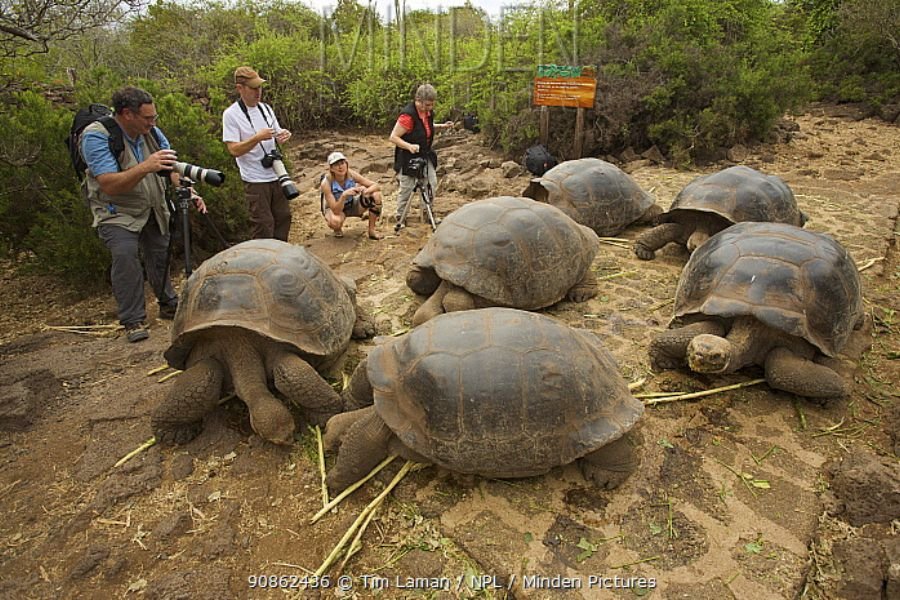
Galapagos giant tortoise (Chelonoidis nigra)
The Galapagos tortoise, or Galapagos giant tortoise, is endemic to the Galapagos. It is native to the islands and exists only there. There are about 13 subspecies of these giant tortoises. One of which had even been considered extinct for over 100 years. However, in 2019 an individual was located on one of the archipelago islands. More recently, in 2022, its species was confirmed and it was named Fernanda (in honor of the island where it was found, Fernandina).
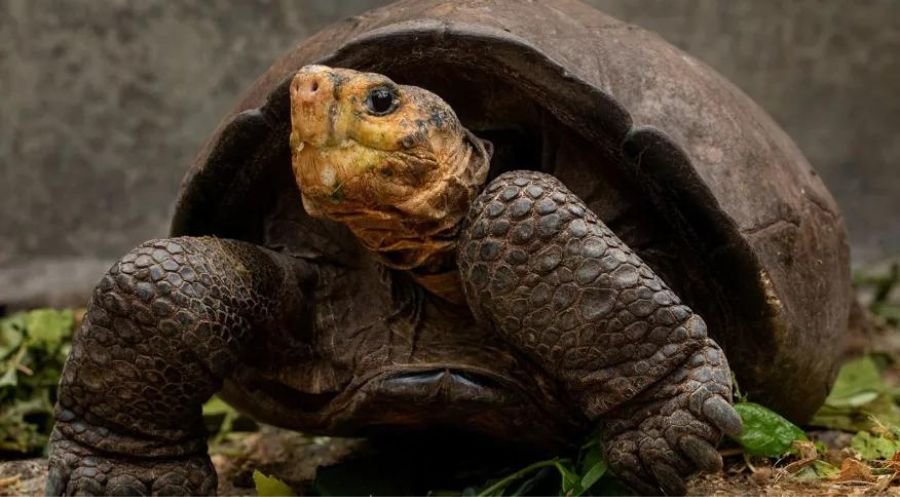
Source: CNN Brasil
The Galapagos giant tortoises are considered the 10th heaviest reptile in the world. It can weigh more than 900 pounds and an adult tortoise can measure 70 inches long. Out of all types of living land turtles, they are the largest species. Also, it is considered one of the longest-lived species. Its lifespan can reach two hundred years. Unfortunately, Galapagos tortoises are one of many species considered vulnerable to extinction by the International Union for Conservation of Nature (IUCN).
These giant tortoises are herbivorous animals. Did you know that they acquire most of their moisture from the dew and sap of their food? Because of that, they can go up to six months without water! Also, they can spend a year without any water or food, surviving only on their body fat.
Another curiosity about the giant tortoises: the name “Galapagos ” in Galapagos tortoises originates from a word in Spanish (galapago). It means saddle, making an analogy to the islands’ giant tortoises’ shells.
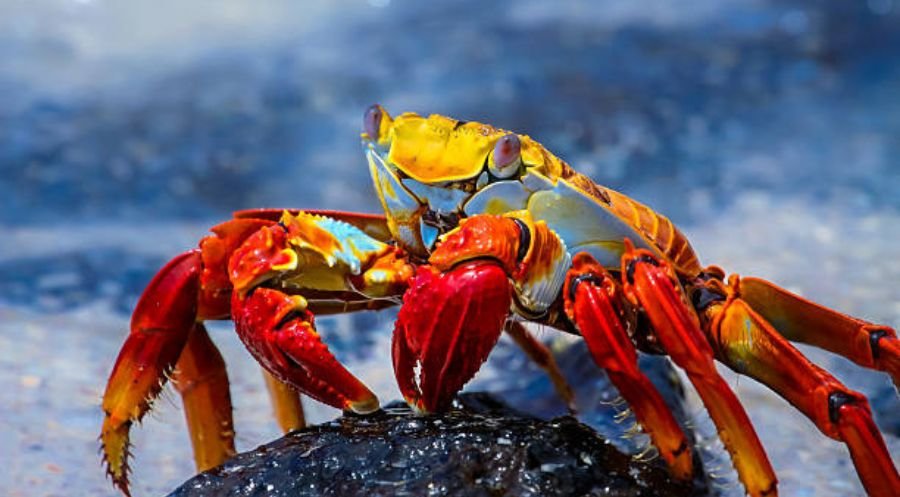
Sally Lightfood crab (Grapsus grapsus)
The Grapsus is a genus of crab in the Grapsidae family. Widely found along the Pacific coast of Mexico, Central and South America, and the Galapagos Islands. Its favored habitats are the coast and rocky beaches. They tend to hide in rock crevices when not feeding or at night. Adult individuals of this species have a varied pattern of colors and details on the shell and have blue or green eyes. Most of those that inhabit the islands have red legs and claws, blue bellies, and orange backs.
They feed on algae, sea sponges, other small crustaceans, and small fish. They are not very large. As adults, they can reach 3.1 inches of the carapace. Its lifespan is 10 years and, so far, there is no data on its conservation status in nature.
The sally lightfood crabs are very “friends” of the Galapagos marine iguanas: they are known to remove ectoparasites from the bodies of their neighbors. Awww, so cute!
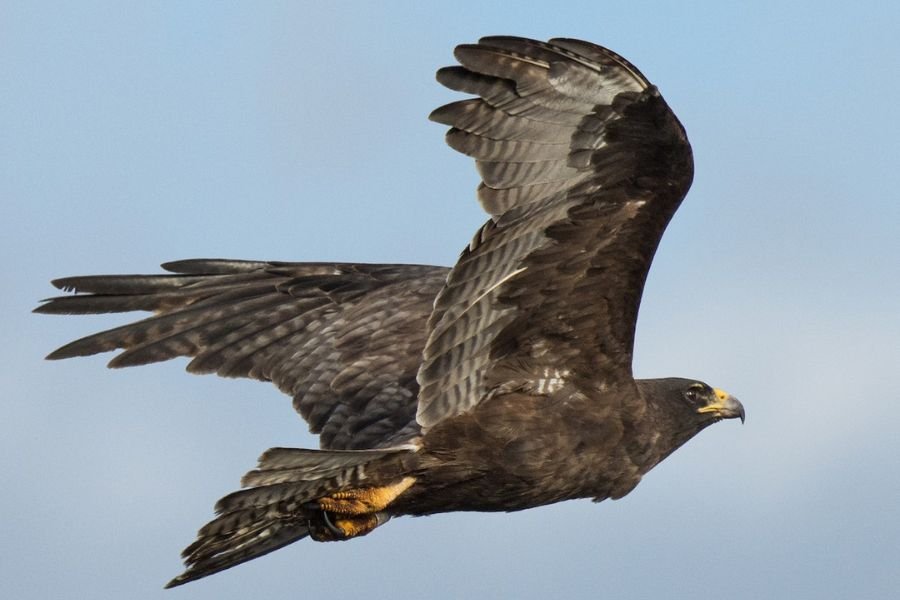
Galapagos Hawk (Buteo galapagoensis)
The Galapagos hawk is a diurnal bird of prey, native to the Galápagos, and lives exclusively there. As adults, they are usually brownish-black in color, looking sooty, with pale brown or yellowish spots, and a white base close to the body. They can reach 22 inches in height and have a wingspan of 48 inches. It is one of the fastest hawks in the world!
It is an expert hunter with keen eyesight, has a high-speed flight, powerful claws, and a threatening beak. They feed on small invertebrates, lizards, snakes, and rodents. It is a very active and noisy diurnal predator. Sometimes they hunt in groups of 2 or 3 individuals and soar to almost 660 feet in the sky.
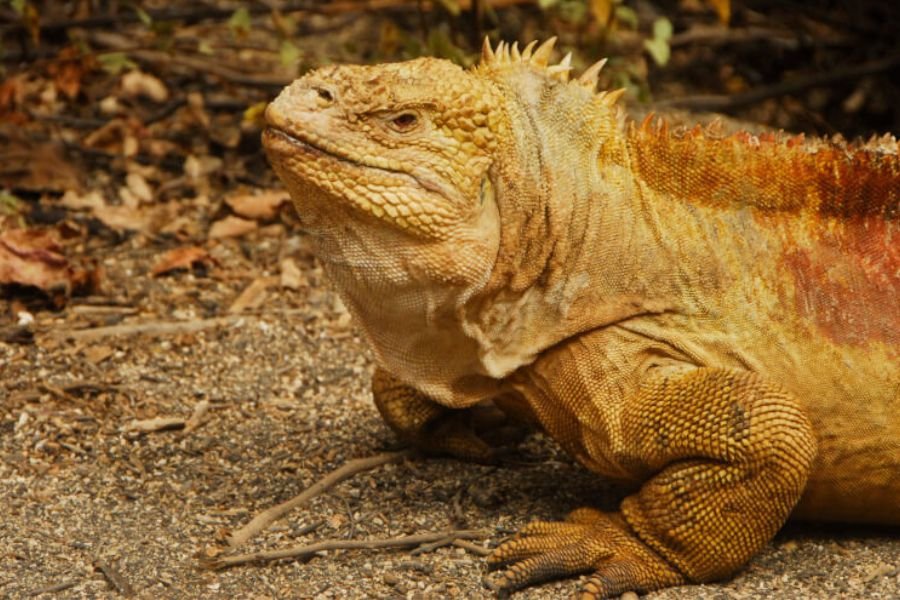
Galapagos land iguana (Conolophus subcristatus)
This iguana is yet another representative of the Galapagos fauna: it is endemic to the archipelago and lives exclusively there. Animals with diurnal habits, they live in the vegetation of volcanic areas, dry shrublands, deciduous forests, and dry pastures. When they are not active, they hide in the rocks crevices, in burrows in the earth, or under dense vegetation. Some specimens like to climb bushes and trees, both for food and for a nap.
And speaking of food, they eat almost anything, including their skin! From the leaves of trees, grasses, and cacti they eat, they get water. The rest they need comes from grasshoppers, crickets, crabs, and carrion. Yes, their skin and carrion! You can tell that our little friend doesn’t have a very demanding taste, right?
Their lifespan averages 70 years, and they are usually preyed upon by animals introduced to the archipelago, such as pigs, dogs, and cats. But, they also serve as food for native species such as hawks and snakes. It is classified as a vulnerable to extinction species and its population is estimated at a maximum of 10 thousand individuals.
Fun fact about the Galapagos land iguana: the female of this species is capable of traveling up to 25 miles in search of a suitable place for nesting (making her nest and laying her eggs).
“Like their brothers the sea-kind, they are ugly animals, of a yellowish orange beneath, and of a brownish red color above: from their low facial angle they have a singularly stupid appearance.”
Charles Darwin, 1835.
Well, as the saying goes, ‘different strokes for different folks’. Some find them ugly, like Darwin, and some find them exotically beautiful. How about you? Leave your thoughts in the comments at the end of this article.
Conclusion
Here we only know 5 representatives of the magnificent Islands’ fauna, including the famous Galapagos tortoises. There are still many others to discover. And knowing it, we reinforce even more the importance of preserving nature and everything that is part of it. The inhabitants of this splendid archipelago have learned to coexist harmoniously with its fauna and flora. They remain committed to managing inclusively and living sustainably using their resources. Resources such as fishing, livestock, recreation, and tourism (an activity that receives more than 200,000 visitors a year). The secret is: to know to preserve!

